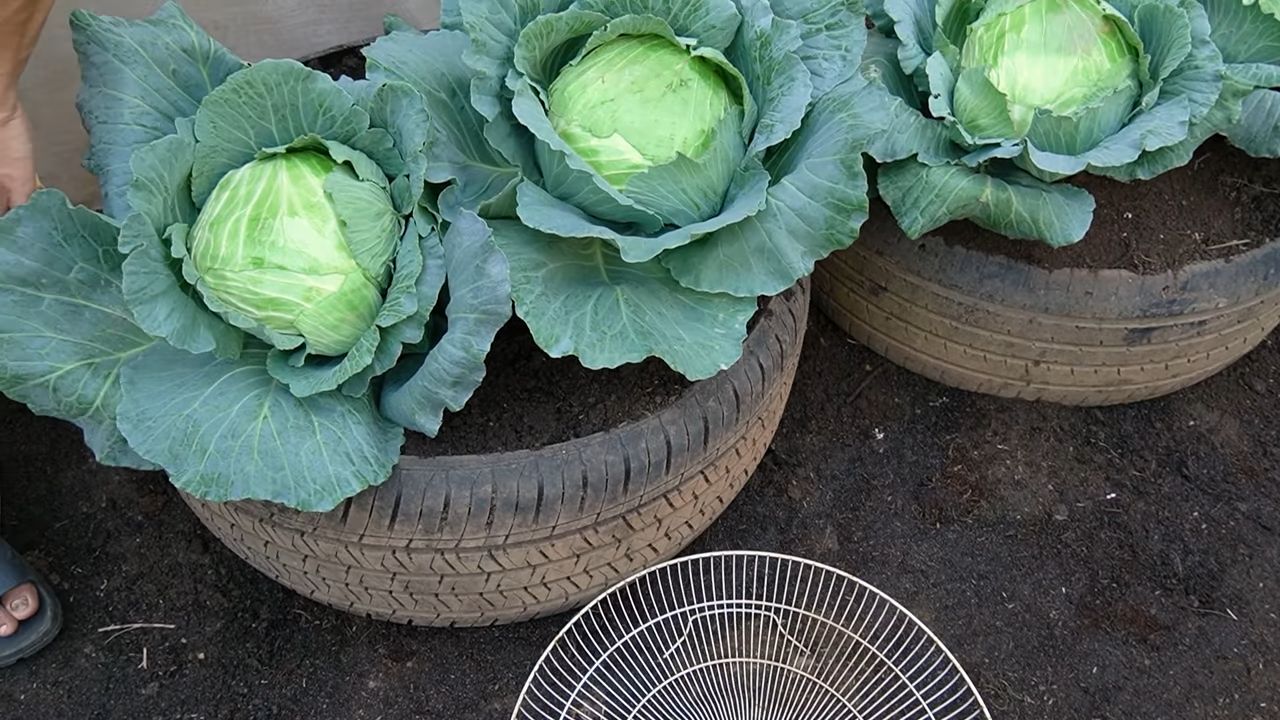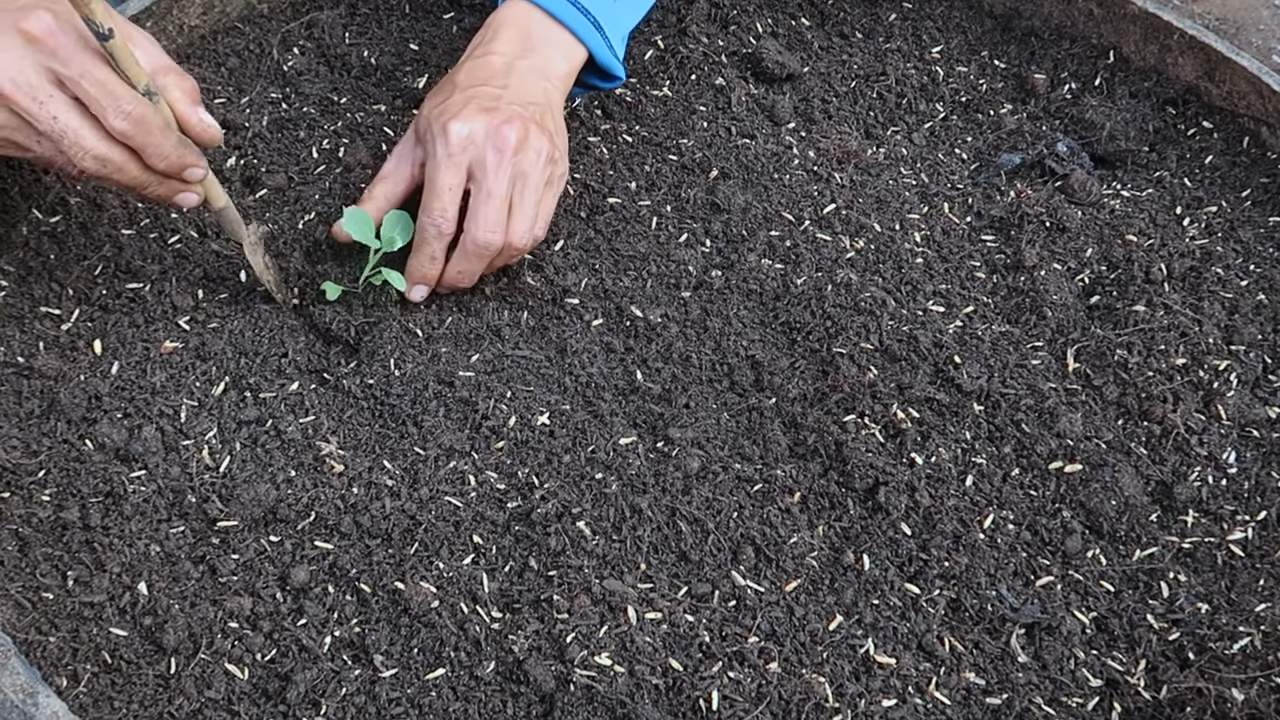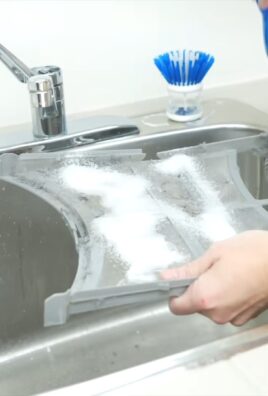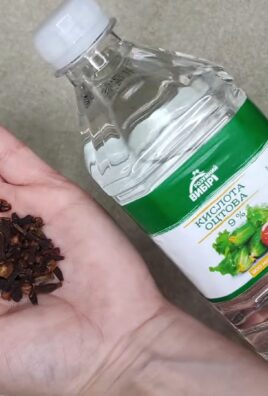Cabbage storage easy tip: Ever bought a beautiful, vibrant head of cabbage, only to find it wilted and sad in your fridge a few days later? I know I have! It’s a common kitchen woe, and it’s incredibly frustrating to waste perfectly good produce. Cabbage, a staple in cuisines around the world from sauerkraut in Germany to kimchi in Korea, has been cultivated for thousands of years. Its versatility and nutritional value make it a fantastic addition to any diet, but its shelf life can be a real challenge.
That’s why I’m so excited to share this simple, yet incredibly effective, cabbage storage easy tip that will keep your cabbage crisp and fresh for weeks, not just days! Imagine having cabbage on hand whenever you need it, ready to be transformed into coleslaw, stir-fries, or hearty soups. No more last-minute grocery runs or throwing away spoiled vegetables. This DIY trick is a game-changer for reducing food waste, saving money, and enjoying delicious, healthy meals. Let’s dive in and unlock the secret to long-lasting cabbage!

Keeping Cabbage Fresh: My Foolproof DIY Storage Hack
Okay, let’s talk cabbage. It’s a nutritional powerhouse, super versatile in the kitchen, but also notorious for going slimy and sad in the fridge before you can even blink. I’ve been there, throwing away half a head of cabbage more times than I care to admit. But fear not, fellow cabbage lovers! I’ve finally cracked the code to keeping cabbage crisp and fresh for weeks, not just days. And the best part? It’s ridiculously easy and uses stuff you probably already have at home.
This isn’t just about wrapping it in plastic wrap (though that’s a start). This is about creating the *ideal* environment for your cabbage to thrive in your refrigerator. Think of it as giving your cabbage a little spa day, extending its life and keeping it ready for coleslaw, stir-fries, or whatever cabbage-y goodness you’re craving.
Here’s my tried-and-true method, broken down into easy-to-follow steps:
What You’ll Need
Before we dive in, let’s gather our supplies. This is a pretty low-key operation, so you won’t need anything fancy.
* A head of cabbage (obviously!)
* Paper towels (the more absorbent, the better)
* A large, resealable plastic bag (gallon-sized is usually perfect)
* A sharp knife
* A cutting board
The Prep Work: Getting Your Cabbage Ready for Storage
This first step is crucial. We need to make sure the cabbage is clean and ready to be pampered.
1. Inspect Your Cabbage: Give your cabbage a good once-over. Look for any bruised, damaged, or discolored outer leaves. These are the first to go bad and can speed up the spoilage of the whole head.
2. Remove Outer Leaves (If Necessary): If you find any of those less-than-perfect outer leaves, gently peel them off and discard them. Don’t be afraid to remove a few layers if needed. We want to start with a fresh, healthy surface.
3. Dry the Cabbage Thoroughly: This is super important! Moisture is the enemy of long-lasting cabbage. Use paper towels to pat the entire head of cabbage dry, paying special attention to any crevices or folds in the leaves. I like to use a clean paper towel for each section to ensure I’m not just spreading moisture around.
The Paper Towel Magic: Creating a Moisture Barrier
This is where the magic happens! The paper towels act as a moisture barrier, absorbing excess moisture and preventing the cabbage from becoming soggy.
1. Wrap the Cabbage in Paper Towels: Take several paper towels and completely wrap the entire head of cabbage. I usually use about 4-6 paper towels, depending on the size of the cabbage. Make sure the paper towels are snug but not too tight. You want them to absorb moisture, not suffocate the cabbage.
2. Secure the Paper Towels: You don’t need tape or anything fancy here. Just make sure the paper towels are tucked in securely around the cabbage. The goal is to create a barrier that will absorb moisture from all sides.
The Bag It Up: Creating a Controlled Environment
Now, we’re going to create a little microclimate for our cabbage inside a plastic bag. This will help regulate humidity and prevent it from drying out.
1. Place the Wrapped Cabbage in a Plastic Bag: Gently slide the paper towel-wrapped cabbage into a large, resealable plastic bag. Make sure the bag is big enough to accommodate the cabbage without squishing it.
2. Remove Excess Air: Before sealing the bag, gently press out as much air as possible. This will help prevent condensation from forming inside the bag, which can lead to spoilage.
3. Seal the Bag: Seal the bag tightly, making sure there are no gaps or openings. We want to create a sealed environment that will protect the cabbage from the harsh conditions of the refrigerator.
The Fridge Placement: Location, Location, Location!
Where you store your cabbage in the fridge can also make a difference in how long it lasts.
1. Choose the Crisper Drawer: The crisper drawer is designed to maintain a higher humidity level than the rest of the refrigerator, which is perfect for storing vegetables like cabbage.
2. Avoid Overcrowding: Make sure the crisper drawer isn’t too crowded. Overcrowding can restrict airflow and lead to uneven cooling, which can shorten the lifespan of your cabbage.
3. Monitor the Paper Towels: Every few days, check the paper towels. If they feel damp or soggy, replace them with fresh, dry paper towels. This is crucial for maintaining a dry environment and preventing spoilage.
Using Your Stored Cabbage: Tips and Tricks
Okay, so you’ve successfully stored your cabbage and it’s still looking fresh and crisp. Now what?
1. Cut Only What You Need: When you’re ready to use your cabbage, only cut off the amount you need. Leaving the rest of the head intact will help it stay fresher for longer.
2. Rewrap and Reseal: After cutting off a portion of the cabbage, rewrap the remaining portion in fresh paper towels and reseal it in the plastic bag.
3. Inspect Before Using: Before using any cabbage, always inspect it for any signs of spoilage, such as discoloration, sliminess, or an unpleasant odor. If you notice any of these signs, discard the cabbage.
4. Enjoy! Now you can enjoy your fresh, crisp cabbage in all your favorite recipes!
Troubleshooting: Common Issues and Solutions
Even with the best storage methods, sometimes things can go wrong. Here are some common issues and how to address them:
* Cabbage is starting to smell: This is a sign that the cabbage is starting to spoil. Discard it immediately.
* Paper towels are constantly damp: This could indicate that your refrigerator is too humid. Try adjusting the humidity settings in your crisper drawer or adding a desiccant packet to the bag.
* Cabbage is wilting: This could be due to a lack of moisture. Make sure the paper towels are slightly damp, but not soaking wet. You can also try spritzing the cabbage with a little water before wrapping it in paper towels.
* Outer leaves are turning brown: This is normal and doesn’t necessarily mean the entire head of cabbage is spoiled. Simply remove the brown leaves and use the rest of the cabbage.
Why This Works: The Science Behind the Freshness
So, why does this method work so well? It all comes down to controlling moisture and preventing spoilage.
* Moisture Control: Cabbage, like many vegetables, is mostly water. Excess moisture can create a breeding ground for bacteria and mold, leading to spoilage. The paper towels absorb this excess moisture, keeping the cabbage dry and fresh.
* Humidity Regulation: The plastic bag creates a controlled environment that helps regulate humidity. This prevents the cabbage from drying out and becoming wilted.
* Air Circulation: Removing excess air from the bag helps prevent condensation from forming, which can also lead to spoilage.
Beyond the Basics: Advanced Cabbage Storage Techniques
Want to take your cabbage storage game to the next level? Here are a few advanced techniques to try:
* Vacuum Sealing: If you have a vacuum sealer, you can use it to remove even more air from the bag, further extending the shelf life of your cabbage.
* Blanching and Freezing: For long-term storage, you can blanch the cabbage (briefly boil it and then plunge it into ice water) and then freeze it. This will help preserve its flavor and texture.
* Fermenting: Turn your cabbage into sauerkraut or kimchi! Fermenting is a great way to preserve cabbage and add a delicious, tangy flavor.
My Final Thoughts: Cabbage Storage Success!
I hope this guide has helped you conquer your cabbage storage woes! With a little bit of effort, you can keep your cabbage fresh and crisp for weeks, saving you money and reducing food waste. Remember to experiment and find what works best for you and your refrigerator. Happy cabbage-ing!

Conclusion
So, there you have it! This simple, yet incredibly effective, DIY cabbage storage trick is a game-changer for anyone who loves to cook with cabbage but hates the inevitable wilting and waste. We’ve all been there – buying a beautiful head of cabbage with the best intentions, only to find it slimy and unusable in the crisper drawer a few days later. This method, however, allows you to keep your cabbage fresh and crisp for weeks, saving you money, reducing food waste, and ensuring you always have this versatile vegetable on hand when inspiration strikes.
Why is this a must-try? Because it’s ridiculously easy, requires minimal effort and supplies (just some paper towels and a plastic bag!), and delivers exceptional results. Think about the possibilities! You can stock up on cabbage when it’s on sale, knowing it won’t go bad before you have a chance to use it. You can meal prep with confidence, knowing your shredded cabbage for coleslaw or stir-fries will stay fresh and vibrant. You can even experiment with different types of cabbage, from the classic green to the vibrant red and the delicate Savoy, without worrying about spoilage.
Beyond the basic method, there are a few variations you can explore to further customize your cabbage storage. For instance, if you live in a particularly humid climate, you might want to change the paper towels every few days to ensure they stay dry and prevent moisture buildup. Alternatively, you could try wrapping the cabbage in a clean kitchen towel instead of paper towels – just make sure the towel is slightly damp, not soaking wet. Some people also swear by storing their cabbage in a perforated plastic bag to allow for better air circulation. Experiment and see what works best for you and your specific environment.
This DIY cabbage storage solution is more than just a trick; it’s a lifestyle change. It’s about being more mindful of our food, reducing waste, and making the most of the fresh produce we buy. It’s about empowering ourselves to cook healthier, more delicious meals with ingredients that are always at their peak.
We wholeheartedly encourage you to give this DIY cabbage storage method a try. You’ll be amazed at how much longer your cabbage stays fresh and crisp. And once you’ve experienced the benefits for yourself, we’d love to hear about it! Share your experiences, tips, and variations in the comments below. Let’s build a community of cabbage-loving cooks who are committed to reducing food waste and enjoying the deliciousness of fresh, perfectly stored cabbage. Don’t forget to share this article with your friends and family who could also benefit from this simple yet effective trick. Happy cooking!
Frequently Asked Questions (FAQ)
How long will cabbage last using this storage method?
Typically, using this DIY cabbage storage method, you can expect your cabbage to last for 2-4 weeks, sometimes even longer. This is significantly longer than the typical 1-2 weeks you might get without any special storage techniques. The key is to keep the cabbage consistently wrapped in a slightly damp paper towel and stored in a plastic bag in the refrigerator. Regularly check the paper towel and replace it if it becomes too wet or dry.
What type of cabbage works best with this storage method?
This storage method works well for all types of cabbage, including green cabbage, red cabbage, Savoy cabbage, and Napa cabbage. The principles are the same: keep the cabbage slightly moist and protected from excessive air exposure. However, keep in mind that some varieties might naturally have a shorter shelf life than others. For example, Savoy cabbage, with its more delicate leaves, might not last quite as long as a tightly packed green cabbage.
Can I store cut cabbage using this method?
While this method is primarily designed for whole heads of cabbage, you can also use it to store cut cabbage, although the shelf life will be shorter. If you have leftover cut cabbage, wrap it tightly in a damp paper towel and place it in a sealed plastic bag or container. Try to use the cut cabbage within 3-5 days for the best quality. Be sure to check for any signs of spoilage, such as a slimy texture or unpleasant odor, before using.
What if the paper towel gets too wet?
If the paper towel becomes excessively wet, it can actually promote spoilage by creating a breeding ground for bacteria. It’s important to monitor the moisture level of the paper towel and replace it if it becomes too damp. The goal is to keep the cabbage slightly moist, not soaking wet. A slightly damp paper towel will help maintain the cabbage’s crispness without encouraging mold or bacterial growth.
Is it necessary to use a plastic bag? Can I use a reusable container instead?
The plastic bag helps to create a humid environment around the cabbage, which is essential for preventing it from drying out. While a plastic bag is recommended, you can also use a reusable container with a tight-fitting lid. The key is to ensure that the container is airtight to prevent moisture loss. If using a reusable container, you might want to place a damp paper towel at the bottom of the container as well as wrapping the cabbage to provide extra moisture.
How do I know if my cabbage has gone bad?
There are several signs that indicate your cabbage has gone bad. Look for discoloration, such as brown or black spots on the leaves. The cabbage might also develop a slimy texture or an unpleasant odor. If you notice any of these signs, it’s best to discard the cabbage. It’s always better to be safe than sorry when it comes to food safety.
Can I freeze cabbage?
Yes, you can freeze cabbage, but it’s important to blanch it first to preserve its quality. To blanch cabbage, cut it into wedges or shred it, then submerge it in boiling water for 1-2 minutes. Immediately transfer the cabbage to an ice bath to stop the cooking process. Drain the cabbage thoroughly and pack it into freezer-safe bags or containers. Frozen cabbage is best used in cooked dishes, as it may become slightly softer after thawing.
Does this method work for other vegetables?
This storage method can also be effective for other leafy green vegetables, such as lettuce and broccoli. The principle is the same: keep the vegetables slightly moist and protected from excessive air exposure. However, the shelf life may vary depending on the type of vegetable. Experiment and see what works best for you.
What are some creative ways to use cabbage?
Cabbage is an incredibly versatile vegetable that can be used in a wide variety of dishes. You can shred it and use it in coleslaw, stir-fries, or salads. You can also use it to make stuffed cabbage rolls, soups, or stews. Cabbage can also be fermented to make sauerkraut or kimchi. Don’t be afraid to experiment and try new recipes!
How does this DIY cabbage storage method help reduce food waste?
By extending the shelf life of cabbage, this storage method helps to reduce food waste by preventing it from spoiling before you have a chance to use it. This is especially important considering that a significant amount of food is wasted each year, contributing to environmental problems and economic losses. By using this simple trick, you can do your part to reduce food waste and save money.




Leave a Comment